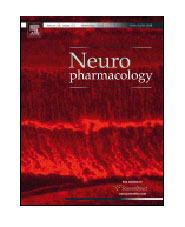“The use of cannabis as a therapeutic and recreational substance goes back to thousands of years throughout Asia, Middle East, Southern Africa, and South America.
The discovery of Δ-9-tetrahydrocannabinol (Δ9-THC) by Mechoulam and Gaoni in the midsixties as the major psychoactive constituent of cannabis sativa led to another important discovery, namely, its specific binding site that was isolated and cloned in 1990. This first cannabinoid receptor was coined CB1R and triggered a number of investigations on its expression, localization, and function within the body tissue including the brain, in various species. This was followed by the discovery in 1992 of the first endocannabinoid (eCB), anandamide, followed by another cannabinoid receptor CB2R and a second endocannabinoid called 2-arachidonoylglycerol (2-AG). Later on, some of the enzymes responsible for their synthesis (N-acyl phosphatidylethanolamine phospholipase D (NAPE-PLD); diacylglycerol lipase (DAGL)) and degradation (fatty acid amide hydrolase (FAAH); monoacylglycerol lipase (MAGL)) were identified.
Studies on the expression and localization of the cannabinoid receptors in the brain have burgeoned in the last decade and have furnished valuable data on their putative involvement in various sensory-motor and cognitive functions in diverse animal species, including Man. These studies have recently received substantial attention from pharmaceutical companies as a potential source for novel treatments. Additionally, the dilemma of legalizing the use of cannabis in some countries makes the investigation on cannabinoid systems more momentous. This special issue is therefore timely and brings historical and groundbreaking novel research on the role of these cannabinoid receptors in the mammalian central nervous system (CNS).
We hope that the collected papers in this special issue will contribute to the understanding of the various mechanisms involved in the functions of the endocannabinoid system and the development of new pharmaceutical tools to treat visual disorders.”
http://www.hindawi.com/journals/np/2016/9146713/








